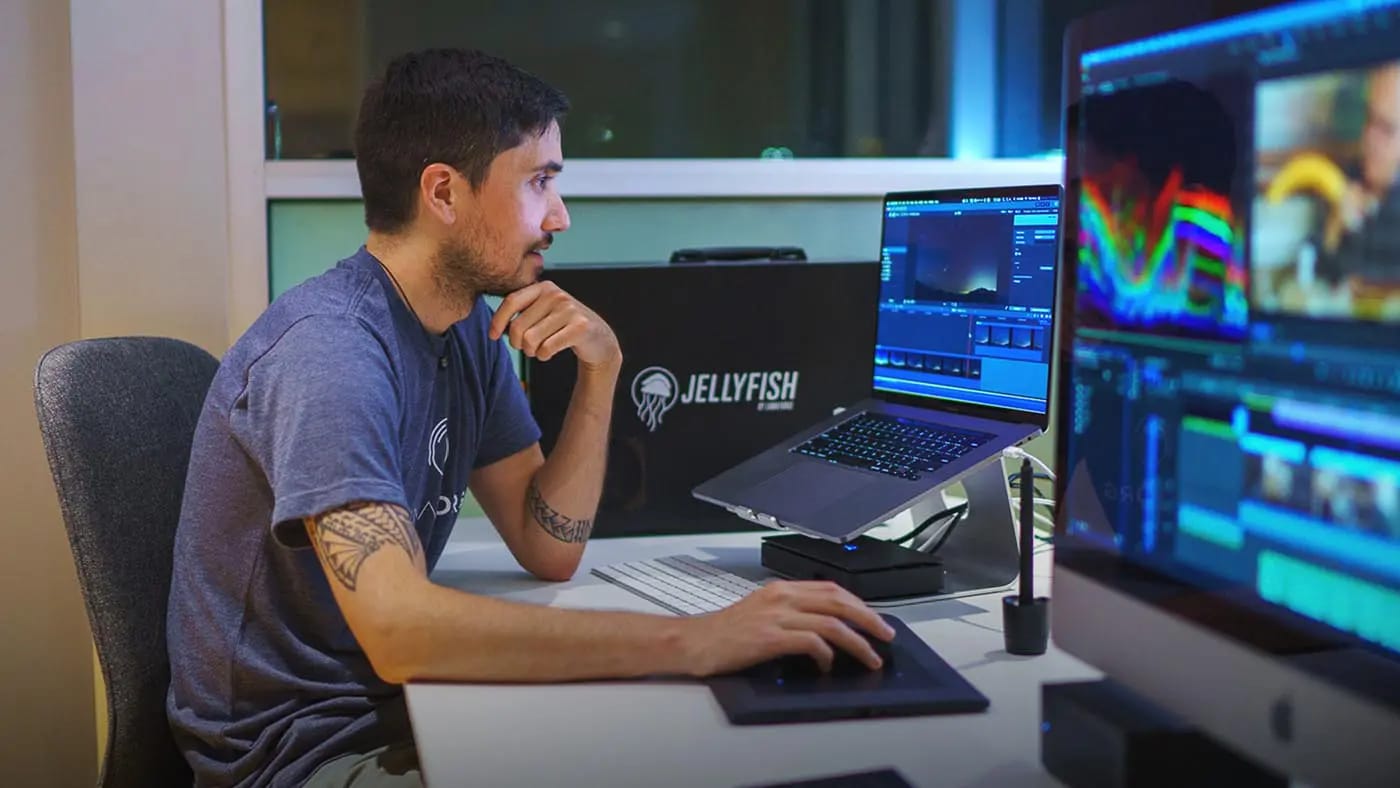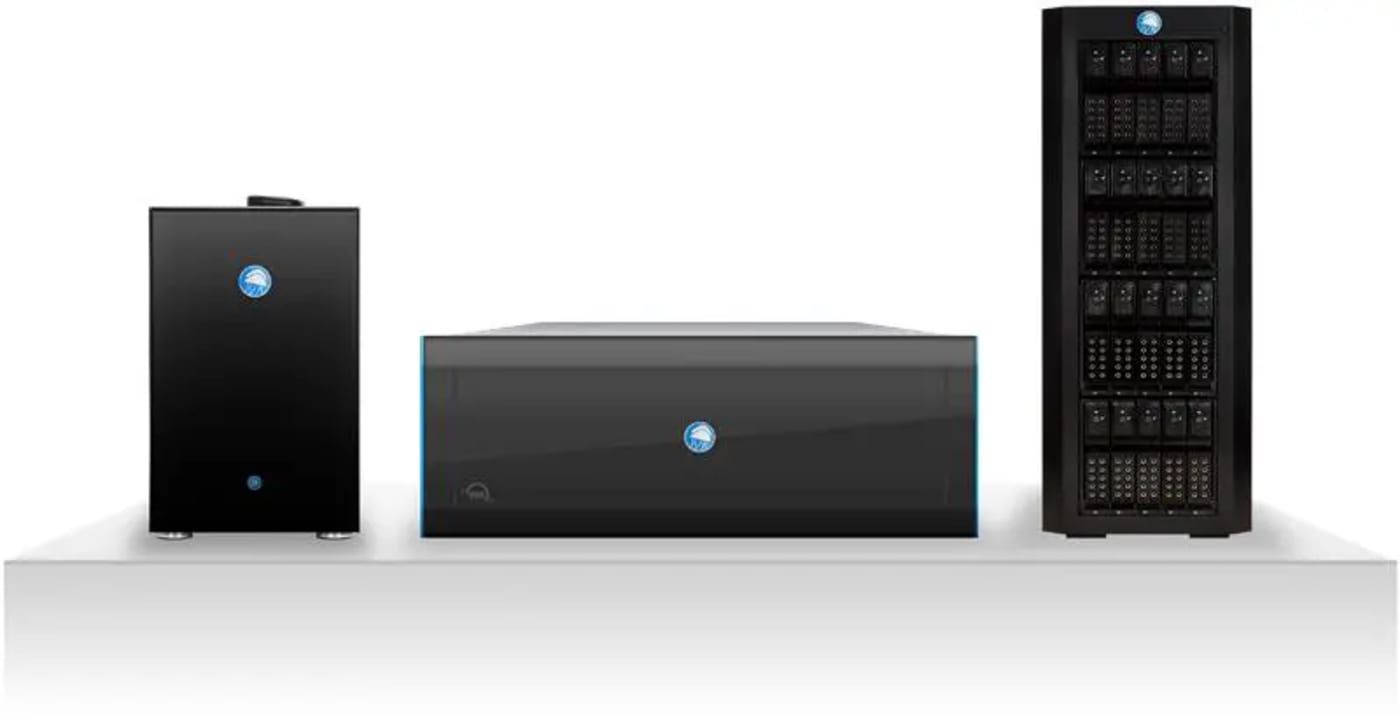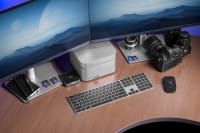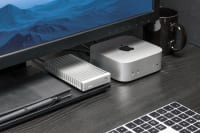Do You Need a NAS? Or Are You Just a Data Hoarder?
Constantly running out of disk space for your media projects? Look into Network Attached Storage and whether NAS is the right storage solution for you.
Conner Stirling • Jun 24, 2022

You’ve done it. Your edit is complete and it’s time to hit render. One gentle click and then it happens… that dreaded message
“Insufficient disk space. Render failed.”
Panic floods your body. How could this happen? You just bought another 10TB drive a week ago. There is no way it could be filled already. Your client is expecting their video by the end of day and there isn’t a shred of spare disk space in sight. Swiftly you run to the closet and sift through a mountain of drives. Some are so ancient they belong in a museum. Firewire? Can you get those cables anymore? Relics of technology lost to the sands of time.
Half the drives aren’t even labelled! You’re searching for anything at this point. Even an ancient thumb drive would do. A metal glint catches your eye. An old mechanical drive wrapped and choked by its own power cord with a slightly rusted USB 2.0 port. It will have to do.
It clicks to life as you plug it in, Finder is telling you 0.01 of 2TB is available. Your NLE chirps back at you “insufficient disk space, render failed”. You must now decide… delete the entire photo album of your sixth grade ski trip or tell the client they need to wait until tomorrow to get their video. A few swift clicks and those files are in the bin, your finger hovers over “empty trash”, sweat beads down your face, sirens blare in the distance.
…BEEP. BEEP. BEEP. BEEP. …
A dream. A nightmare. The deadline is only at the end of the week. You breathe a sweet sigh of relief until you realize… you’re gonna need a bigger boat.
The Three Types of Storage
So—now that you’ve been 12 Reddit threads deep—you’ve wound up here, dear reader, looking for the solution everyone has recommended. You need yourself a NAS. First off, welcome! We’re going to get things cleared up for you. The first thing I need you to do is walk to a mirror, look yourself deep in the eye and ask yourself one question… “Do I actually need a NAS? …or am I a data hoarder?” It’s a legitimate question, one that can lead to some deep soul searching (I’m still looking in the mirror at this point).
We can really break up our storage needs into three categories: active, near line, and archival storage (sometimes called cold storage). Let’s talk about active storage and dive into how a NAS device fulfills that role.
What is a NAS?
NAS stands for Network Attached Storage. A NAS is generally easy to setup and appears to the users as a network mounted volume. It’s meant to expand your storage capacity and enable file sharing across an organization. It’s a computer connected to a network that provides file access to other devices on the network. In most cases, it has multiple drives arranged in a RAID configuration; the more drives you have, the larger amount of data you can store and access.
Who needs a NAS?
You should consider a NAS if you need to access files from more than one computer. It serves as a shared storage point for multiple users to access and collaborate on files. A NAS enables you to attach multiple workstations to work on and complete projects.

Need to add an assistant editor? Great, grab an ethernet cable and connect it to their workstation. Need to hire a colourist? Perfect, plug them in as well. With a Jellyfish Mobile, Tower or R24, all you need to do is open the included Manager software to create a new user and make sure the user downloads the Jellyfish Connect app. Now your team is scaled to meet the needs of your project and you haven’t had to physically pass a single drive or transfer any files. Everyone is working, stress is down, and efficiency is up.
Do you feel that? That’s as close to nirvana as you’re going to get working in this industry.
This is where and how a high-performance NAS like the Jellyfish fulfills the need for active storage. Multiple users reading and writing large files all at once to deliver a project while eliminating the latency of transferring files.
Why don’t I need a NAS?
Some users turn to a NAS looking for large expandable active storage but fail to take advantage of or have the need for the devices networking capabilities. If you’re looking at NAS solutions for capacity alone, you might be better served with a direct attached RAID enclosure like a Thunderbay with Thunderbolt connectivity.
If you’re looking for long-term storage for backup, check out the variety of cloud storage services available for reasonable prices, or you could dive into the world of tape-based storage with LTO.
What do I do with my project now?
At the end of a project, it’s important to keep your files available for later access. Whether your client comes back and needs to reuse some footage, or they’ve lost the final video you sent them months ago.
But this doesn’t mean that you need to have it take up precious space on your active storage NAS. We need a backup solution, and this is where near line and archival storage enter the game.
These solutions are usually slower and larger capacity than active storage. You can’t necessarily edit in real-time from these solutions, but they are great for transferring and storing media at a lower cost. These solutions can be something like a less performant NAS if again you need multiple users to bring footage or elements back online. But for most long-term storage applications, things like LTO tape and back-up cloud storage are going to be your go-to user friendly solutions.
So, do you need a NAS or are you a data or hoarder? The first step is admitting you have a problem, the second is finding the solution that best suits your needs. Today and into the future. A NAS device is a flexible and powerful storage solution that meets the needs of performance, collaboration and ease of use for users in a networked environment.
Other topics you might like
The OWC Atlas Ultra CFexpress Card is Officially Recommended for the Blackmagic PYXIS 12K
Updated on Oct 9, 2025
Can USB4 v2 and Thunderbolt 5 Enclosures Deliver PCIe Gen5 Speeds?
Updated on Oct 6, 2025
OWC Wins Two Best of Show Awards at IBC 2025
Updated on Sep 17, 2025
 USA + International
USA + International OWC Canda
OWC Canda OWC Europe
OWC Europe


